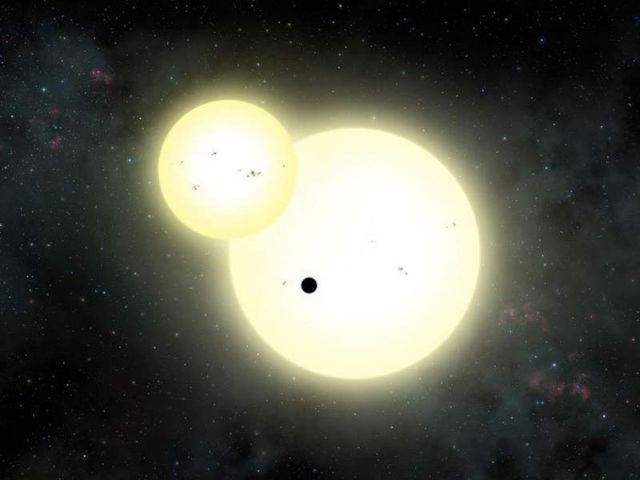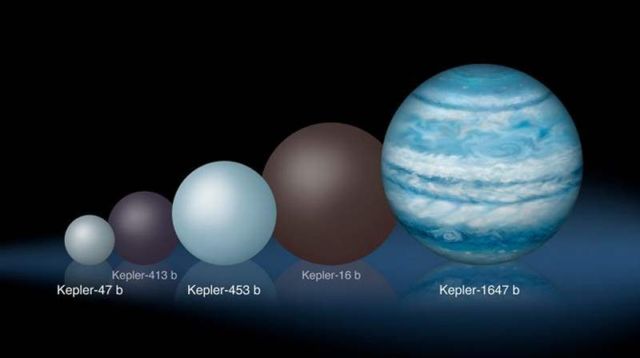If you cast your eyes toward the constellation Cygnus, you’ll be looking in the direction of the largest exoplanet yet discovered around a double-star system.
Using NASA’s Kepler Space Telescope, a team led by astronomers from NASA’s Goddard Space Flight Center in Greenbelt, Maryland, and San Diego State University (SDSU) in California, identified the new planet, Kepler-1647b.
Above, artist’s impression of the simultaneous stellar eclipse and planetary transit events on Kepler-1647. Credits: Lynette Cook
The discovery was announced today in San Diego at a meeting of the American Astronomical Society. The research has been accepted for publication in the Astrophysical Journal with Veselin Kostov, a NASA Goddard postdoctoral fellow, as lead author.
Kepler-1647 is 3,700 light-years away and approximately 4.4 billion years old, roughly the same age as Earth. The stars are similar to the sun, with one slightly larger than our home star and the other slightly smaller. The planet has a mass and radius nearly identical to that of Jupiter, making it the largest transiting circumbinary planet ever found.
Comparison of the relative sizes of several Kepler circumbinary planets. Kepler-1647 b is substantially larger than any of the previously known circumbinary planets. Credits: Lynette Cook
Planets that orbit two stars are known as circumbinary planets, or sometimes “Tatooine” planets, after Luke Skywalker’s home world in “Star Wars.” Using Kepler data, astronomers search for slight dips in brightness that hint a planet might be passing or transiting in front of a star, blocking a tiny amount of the star’s light.
“But finding circumbinary planets is much harder than finding planets around single stars,” said SDSU astronomer William Welsh, one of the paper’s coauthors. “The transits are not regularly spaced in time and they can vary in duration and even depth.”
Read more at NASA







Leave A Comment